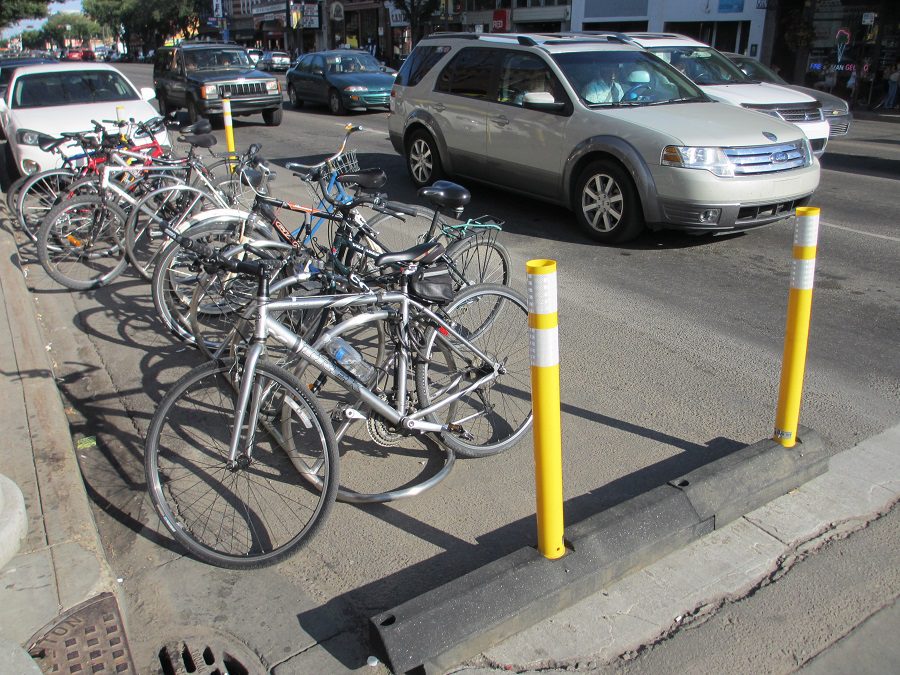How to make cycling in your city safer in four easy steps, according to one Edmonton-based bike courier
In tackling the question of how to make Edmonton's infrastructure more accommodating to cyclists, especially downtown, Metro News went right to an authority on the ground: bike couriers.


In tackling the question of how to make Edmonton’s infrastructure more accommodating to cyclists, especially downtown, Metro News went right to an authority on the ground: bike couriers.
Specifically one bike courier, named Franky Thibaudeau.
As the article’s introduction plainly indicated, bicycle couriers, of all cyclists, are in a uniquely authoritative position to be considering the many problems — big and small — that can get in the way of city riders. In speaking with Thibaudeau, Metro News underlined what he felt were four sure-fire, simple ways to get the city better organized around those who travel by two wheels.
The first, he told Metro News, would be the introduction of more one-way streets. “One-way traffic helps flow the city a lot better,” Thubaudeau said. “I know people here seem to have a huge hate on for it but every city I’ve ridden in with one ways, everything flows so much smoother. When you go to turn, you only have to worry about traffic in one direction, which is so much easier.”
Another, he said — an issue that a Calgary editorial published this week might disagree with — is the introduction of more protected bike lanes.
Thibaudeau, as a bike courier, is someone who rides with traffic routinely. As such, the idea of traveling alongside cars, trucks and buses doesn’t faze him, but he realizes that it doesn’t work for everyone. “For guys like me it’s not so bad,” he said, “but for your average commuter, being around traffic can be nerve-wracking especially if you’re not used to it, so having some separated bike lanes will definitely help with that, just keeping you a bit separated from the rest of traffic.”
Information, Thibaudeau said, is absolutely crucial to the enshrinement of safe streets in Edmonton — and, presumably, any other city. When it comes to cycling, that information serves a particularly vital role in terms of making streets safer for those in the saddle: by making other traffic realize that bikes, like cars or motorbikes, are just as integral a part of traffic, and worth the same consideration. “You’re going to turn left and you’re stopped,” he said, outlining an all-too-likely scenario, “and you’ll get people in your lane passing you going 40 km/h. If a car or motorbike was stopped to turn, traffic behind them would stop. But on a bike people feel the right to blast past you when you’re in the most vulnerable position.”
His last point, Metro News reported, is one of the simplest solutions of them all: more bike racks.
“[Cyclists] definitely need more places to lock up,” Thibaudeau argued. “I’ve been doing this for six years and for so long there was just poles which, [with] some, you can’t even get your lock around it. They’ve put some [more bike racks] in, but there is still a severe lack of places for cyclists to lock up to.”
From the young courier’s place of well-worn expertise, traversing the city daily on a bike as part of his job, Thibaudeau no doubt knows what he’s talking about. What do your experiences with cycling in the city say? How would you make riding around your own city safer?
